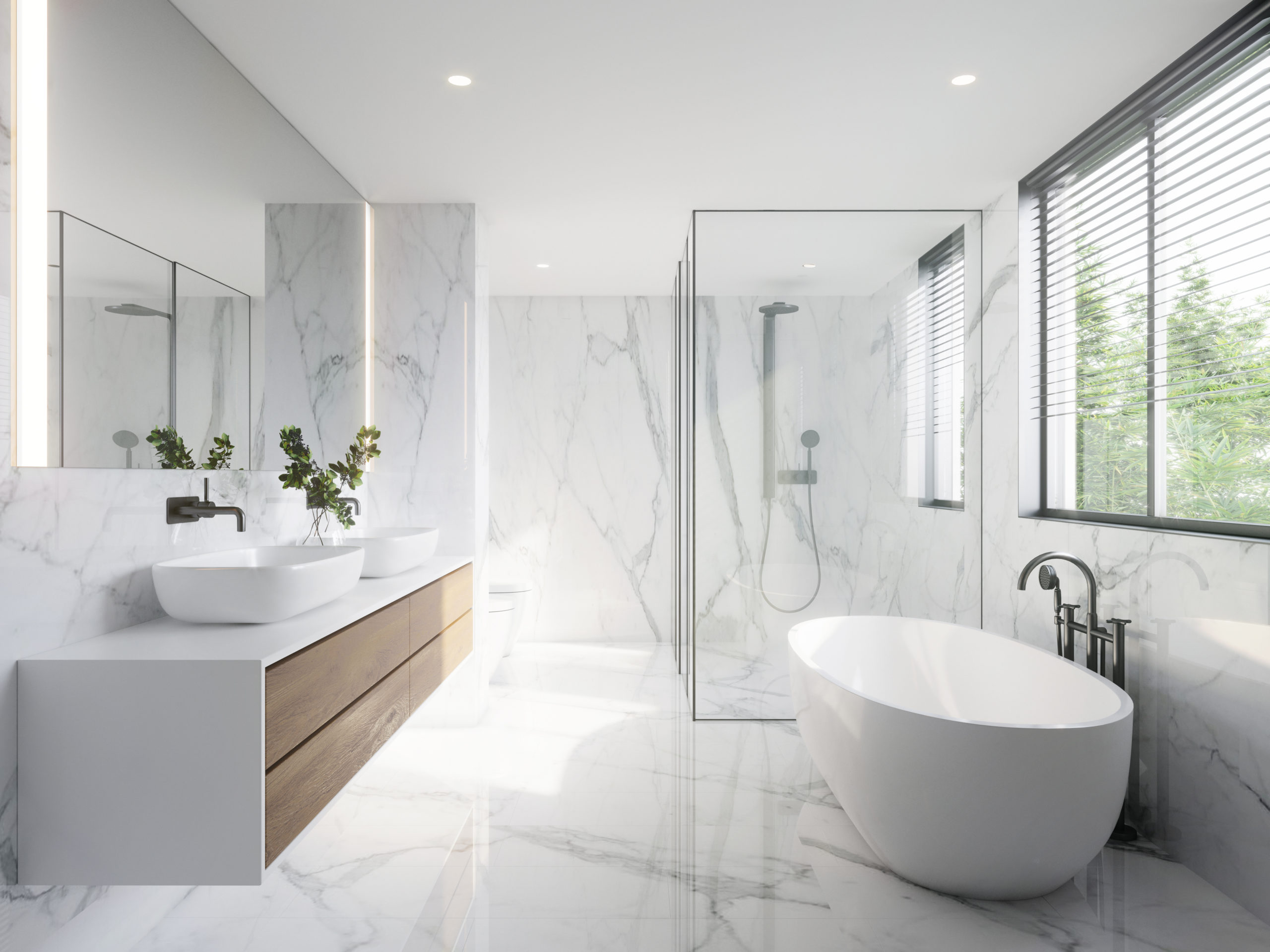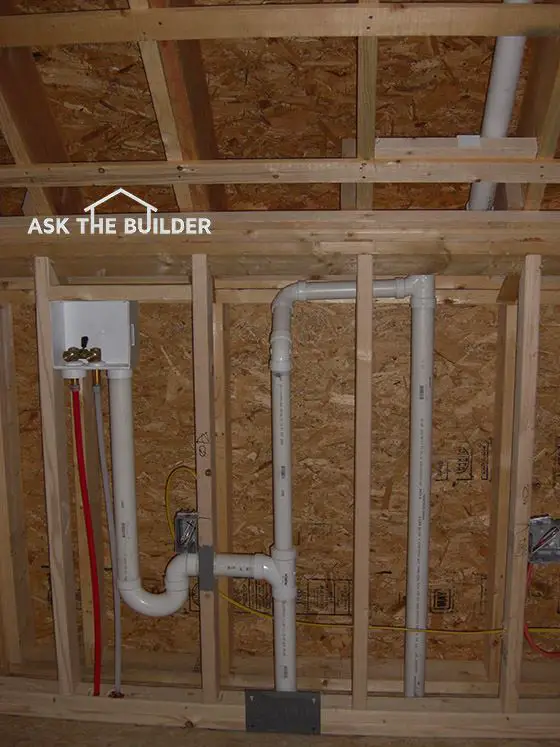Just how do you feel in relation to The Upsides of Proper Ventilation in Plumbing Design?

Appropriate air flow in pipes systems is typically forgotten, yet it is critical for keeping the capability and safety and security of your home's plumbing. Ventilation assists manage air pressure, prevent the accumulation of harmful gases, and guarantee the efficient removal of waste. In this guide, we will certainly discover the relevance of proper pipes air flow, exactly how it functions, and the benefits it brings to your plumbing system.
How Air Flow Functions in Plumbing Systems
Air Pressure Policy
Proper ventilation keeps balanced atmospheric pressure within the plumbing system. When water streams through pipes, it displaces air. Without adequate ventilation, this variation can develop negative pressure, bring about slow drains pipes or siphoning of water from traps, which can trigger undesirable smells to seep into the home.
Stopping Sewage System Gas Buildup
One of the most important features of pipes vents is to stop sewage system gases, such as methane and hydrogen sulfide, from gathering within the home. These gases can posture significant wellness threats and are extremely flammable. Vent pipes allow these gases to leave safely outdoors.
Assisting in Waste Elimination
Air flow helps in the efficient elimination of wastewater by protecting against airlocks in the drainage system. When air can move freely via the vents, it enables water and waste to flow efficiently with the pipes, decreasing the danger of obstructions and back-ups.
Advantages of Correct Air Flow
Boosted System Efficiency
Effectively ventilated pipes systems run more efficiently, with less blockages, faster draining, and much less pressure on the pipes. This efficiency extends the lifespan of the plumbing system.
Improved Air High Quality
By preventing sewage system gases from entering your home, correct air flow contributes to better interior air top quality, making your living environment healthier and a lot more comfy.
Avoiding Water Damage
Ample air flow helps stop water from being siphoned out of catches, which can cause drain gases going into the home and triggering water damages over time.
Steps to Make Certain Appropriate Air Flow
Consulting Pipes Codes
Constantly speak with regional pipes codes when making or changing your plumbing system. These codes give the required guidelines for proper venting and guarantee your system fulfills security criteria.
Regular Examination and Maintenance
Normal assessments can assist recognize possible air flow issues prior to they end up being significant problems. Upkeep jobs, such as cleaning up air vent pipelines and checking for clogs, are vital for keeping the system in good working order.
Specialist Setup
For new setups or major alterations, it's smart to employ a professional plumbing. They have the experience to make sure the air flow system is appropriately made and mounted according to code.
Understanding Air Flow in Plumbing
Ventilation in pipes describes the network of pipes that allow air to flow through the water drainage system. These vents serve numerous purposes, including controling atmospheric pressure within the pipes, preventing sewer gases from getting in the home, and helping in the smooth flow of wastewater.
Kinds Of Plumbing Vents
Key Heap Vent
The primary pile air vent, likewise known as the air vent stack, is the key vent in a plumbing system. It extends from the main drainpipe align with the roofing, allowing gases to escape and fresh air to get in the system.
Branch Vent
Branch vents connect to the primary pile vent and serve private components, such as sinks, toilets, and showers. These vents make certain that each component has sufficient air flow to function effectively.
Air Admittance Valve (AAV).
An Air Admission Shutoff (AAV) is a one-way valve that allows air to get in the pipes system without the demand for a traditional air vent pipeline expanding with the roofing system. AAVs are commonly utilized in improvements or locations where setting up a conventional air vent is not practical.
Signs of Poor Ventilation in Pipes.
Slow Draining Fixtures.
If your sinks, tubs, or toilets are draining gradually, it could be a sign of poor ventilation. Insufficient air flow can produce a vacuum result, making it tough for water to drain properly.
Gurgling Seems.
Gurgling sounds originating from drains are frequently an outcome of air being sucked via water traps because of negative pressure in the pipelines. This is a clear indicator of inadequate air flow.
Unpleasant Odors.
Sewage system odors inside your home are a warning that your pipes system is not appropriately ventilated. This could mean that sewage system gases are not being properly aired vent outside, causing potentially unsafe conditions.
Typical Ventilation Errors.
Poor Vent Sizing.
Making use of small vent pipes can bring about poor air circulation and stress imbalances in the system. It's important to make use of vents that meet the specific demands of your pipes system.
Improper Vent Positioning.
Positioning vents too far from the components they serve can lower their efficiency. Proper positioning makes sure that air can move easily and successfully with the system.
Ignoring Code Needs.
Building regulations supply specific standards for plumbing ventilation. Ignoring these codes can lead to a system that fails to work correctly and may lead to expensive repair work or carcinogen.
Conclusion.
Correct ventilation is an essential element of any plumbing system, ensuring that it functions efficiently and safely. By comprehending the significance of air flow, acknowledging the indications of bad air flow, and taking actions to maintain your system, you can stop costly issues and protect your home's air top quality.
4 Things You Should Know About Your Plumbing Vents
What Plumbing Vents Are
Also called a vent stack, a plumbing vent is a vertical pipe attached to your drain line that runs through your roof. The plumbing vent pipe, or plumbing air vent, removes gas and odors from your plumbing system and allows fresh air to enter the pipes, helping the water to flow out of the drain pipes.
What Plumbing Vents Do
Plumbing vents have two basic functions. One of which is to allow unpleasant smelling wastewater and sewer gasses to escape your plumbing system instead of entering your home. Plumbing vent pipes are typically located on roofs, away from windows, to ensure the fumes exit the home completely.
The other function of the plumbing vent is to move fresh air into your plumbing system. This helps move water through every plumbing fixture in your house, like toilets and sink drains. Think of the way in which you need to let a little air into the bottle as you pour soda in order to make the drink flow smoothly.
Different Types of Plumbing Vents
True vent: This is the most common vent option. In simplest terms, a true vent is a vertical pipe attached to your drain line that exits through the roof. They often function as the main vent that other fixtures can connect to. Re-vent pipe or auxiliary vent: Attached to the drain line near specific plumbing fixtures, re-vent pipes run up and over to connect to the main vent. Common vent: Two plumbing fixtures installed on opposite sides of a wall are typically tied into the vent stack using something known as a sanitary cross. Wet vent: This venting option operates as a drain pipe and a vent at the same time. Wet vent drainage systems drain water from one fixture while venting the air from another. Although they’ve been used for over 100 years, wet vent systems have only recently been added to the plumbing code in many areas. If you’re planning on installing one in a bathroom remodel, make sure you check your local code prior to construction. Loop vent: For free-standing fixtures like kitchen island sinks, loop vents are ideal. These vent pipes run under the floor, rise from the P-trap, and create a loop inside the cabinet sink. Air admittance valve: An AAV is a one-way mechanical valve typically installed at the site of the plumbing fixture. AAVs allow venting to occur without having to tie into a larger venting system. They’re ideal for venting fixtures where you aren’t able to easily connect to an existing vent system. Common Plumbing Vent Issues
Although vent pipes typically don’t have water flowing through them, they’re still subject to many typical plumbing issues. For example, clogs are one of the most common problems associated with sewer vent pipes. If your vent pipe gets clogged, all of your plumbing fixtures tied into the vent stack will be affected.
A sink with a slow drain that bubbles and gurgles or a strong sewage smell around your toilet are both indicators that your toilet vent pipe is clogged. Because most vent pipes exit through the roof, old leaves, twigs or even a bird’s nest could be clogging the pipe.
Clogs in your vent pipe system cause a buildup of negative pressure, meaning that water won’t be able to flow out of your home very well. It’s similar to putting your finger over the opening of a straw to trap water inside. When you remove your finger, the water is able to flow out of the straw.
If you suspect you have any blockage in your vent, make sure you have a professional come examine the situation. Left unchecked, a blocked air vent can lead to other costly repairs, like leaks and sediment buildup.
Under Pressure
Pipe vents are essential aspects of a home’s plumbing system. Owning a home means learning about all sorts of things you never put much thought into before. But by understanding as much as you can about the important systems of your home, you can keep those budgets intact and those anxiety levels low.
https://www.homeserve.com/en-us/blog/home-improvement/plumbing-vents/

Do you like reading about Essential Plumbing Vent Pipes: Understanding Their Role? Put a remark below. We would be happy to hear your insights about this write-up. We are looking forward that you come back again before long. Appreciated our posting? Please quickly share it. Let someone else discover it. Thanks for taking the time to read it.
Visit Our Website